Russian President Vladimir Putin and Defence Minister Sergei Shoigu (left) with other high-ranking generals © Kremlin.ru
It has now become clear that the Russian invasion of Ukraine in February 2022 was a major strategic miscalculation that exposed the weaknesses and limitations of the Russian military. Despite its numerical and technological superiority, Russia was unable to achieve most of its objectives and met fierce resistance from Ukrainian forces supported by its Western allies.
One of the main reasons for this failure was the lack of cohesion and coordination within the Russian military,

which led to poor planning, logistical problems, low combat readiness and other shortcomings.
The Russian military is composed of various branches and services, each with its own history, culture, doctrine and interests. These include the ground forces, the air and space forces, the navy, the strategic missile forces, the airborne forces, the special operations forces and others.While some of these branches have been modernised and reformed in recent years, others have lagged behind and suffered from chronic underfunding, corruption and mismanagement. This has led to significant gaps and imbalances in the capabilities and readiness of the various units and formations.
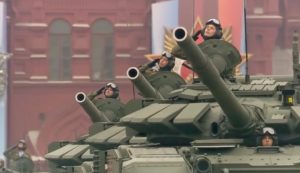
For example, ground forces were neglected and marginalised by the Russian leadership, which prioritised strategic deterrence and air power over conventional land warfare. Ground forces have received less funding and attention than other troop types, resulting in outdated equipment, inadequate training, low morale and high attrition. Many of the units involved in the invasion of Ukraine were ill-prepared and ill-equipped for large-scale conventional warfare against a determined enemy. They had difficulty moving over long distances, securing supply lines, communicating with other units and overcoming Ukrainian defences.

The Russian army, known for its enormous strength and historic military prowess, has been struggling with internal conflicts that are gradually coming to light. These internal struggles, often characterised by power struggles, ideological disputes and personal rivalries, have created a complex web of tensions within the ranks of the Russian armed forces.
The roots of this internal conflict within the Russian army can be traced back to its historical evolution and the Soviet legacy. The centralised command structure of the Soviet era fostered a culture of obedience and strict hierarchy.

However, with the collapse of the Soviet Union and the subsequent transition to a market economy, the military underwent significant changes, including a reduction in manpower and financial constraints. This shift, coupled with the emergence of new political and economic interests, created fertile ground for internal conflicts.
In more recent times, and especially since the beginning of the Russia’s invasion of Ukraine, disagreements regarding military doctrine and strategic priorities have deepened ideological fault lines within the Russian army.
Divergent perspectives on the role of the military in modern warfare, the use of hybrid tactics, and engagement of private military companies and other non-state actors in conflicts have further polarised the ranks.
| Fragmentation
When we think of a Russian invasion of Ukraine, we usually think of Russia crossing the border into Ukraine, but this statement is not entirely accurate. Yes, Russia’s official forces have crossed the border, but Russia’s military presence is actually fragmented, not in the sense that they are fighting each other, although there are certainly internal conflicts in the army, but rather that the Russian armed forces are not a unified organisation. Given Russia’s poor war management, this may not be surprising. However, there is some intention behind this fragmentation, which raises the question of why Putin has developed such a system. Under the circumstances, there are probably a number of good reasons.

And while this fragmentation has some serious consequences for the prospects of war, it is not ideal for the Kremlin on balance. As a starting point, of course, we have the traditional military. The army has been the main player in the war so far, but the navy has kept Ukraine under a blockade, and Russian airborne troops are present, though not nearly as strong as analysts had predicted at the start of the war.
Two days after the invasion of Ukraine, the president of the Chechen Republic, Ramzan Kadyrov, announced that units of his special forces had been sent to Ukraine to support the Russian army. In fact, Kadyrov’s fighters were part of the first wave of attacks on Ukraine and were killed en masse, together with a key commander around the Hostomel airbase. In March 2022, it was reported that elite Chechen units had been sent to Kyiv to assassinate Ukrainian President Volodymyr Zelenski, but that the group had been neutralised after a leak from anti-war elements within the Russian Federal Security Service.
As the Russian advance faltered, many fighters are said to have retreated to the Chechen capital Grozny, having suffered heavy casualties. However, it is believed that Kadyrov sees the invasion as an opportunity to strengthen his power and prestige by sending his men to prove his loyalty to Putin, whose patronage is key to Kadyrov’s authority.
Secretly, many Chechen soldiers feel that they have been sent as cannon fodder into a poorly planned war, but since the Chechen strongman has little regard for the opinions of his people, it is unlikely that this will be the last time he puts them in harm’s way.
| ‘Non-state’ and ‘sub-state’ actors
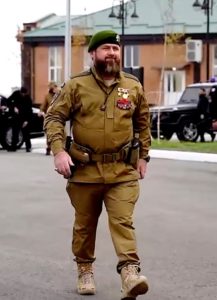
The current war in Ukraine has made it clear that in this new age of warfare, non-state and sub-state actors play a greater role than ever before.
In a conflict situation where state structures are not as effective as they could be, non-state actors can have a disproportionate impact on the situation, as has been particularly evident in eastern Ukraine.
The non-state actors are the various private military companies (PMCs) involved in the conflict. The largest and most prominent among them is, of course, the Wagner Group, which was primarily responsible for the conquest of large areas around the city of Bakhmut and whose commander, the turbulent Yevgeny Prigozhin, is among the few who dare to openly criticise the top Russian army generals and even the president.

This high-profile confrontation once again undermines the vertical power structure of President Putin, who desperately needs convincing victories on the Ukrainian front. However, it is likely that behind Prigozhin’s surprising freedom of speech lies a well-orchestrated Kremlin political project… time will tell.
Then there is the Patriot Group, which works closely with the Russian military intelligence agency GRU. It is even suspected that this private military and security company works on the direct orders of the Russian Defence Minister Sergei Shoigu.
Another private military company is active on the front lines. It is known as ENOT, a Russian acronym for the United Communist People’s Partnerships. It was founded in 2011 by Igor Mangushev, a Russian mercenary and nationalist political advisor, with the aim of uniting various militias in the Donbass into a single and more effective fighting force.
Even Gazprom, Russia’s main energy company, runs a PMC involved in the war. In a February 2023 press release, the Ukrainian government warned of the danger the unit could pose at certain stages of the war.
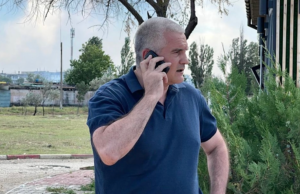
Private armies are illegal in Russia, so of course Moscow has used them for decades. Now it’s making them the main invasion force. Convoy PMC was founded in Russia-occupied Crimea in 2022 by Sergei Aksyonov, head of the Kremlin-backed administration of Crimea. Born in 1972 in the Soviet Republic of Moldova, Aksyonov was a businessman suspected of having links to organised crime. In 2014, shortly after the Russian annexation of Crimea, Aksyonov rose to prominence when Putin appointed him head of the new administration on the peninsula.
Now the PMC is drawing increasing attention on social media as it recruits fighters. According to Western intelligence reports, the rise of this new Russian militia comes as the Kremlin seeks to encourage the emergence of other mercenary groups to compete with Wagner, which has clearly become too powerful for the Russian defence establishment.
Sub-state actors include the armed forces of the Luhansk People’s Republic, where a mercenary group known as ‘Prizrak’ or Ghost Brigade operates and has attracted many foreign fighters. Like Luhansk, the armed forces of the Donetsk People’s Republic are also actively involved in the war alongside Russian troops.
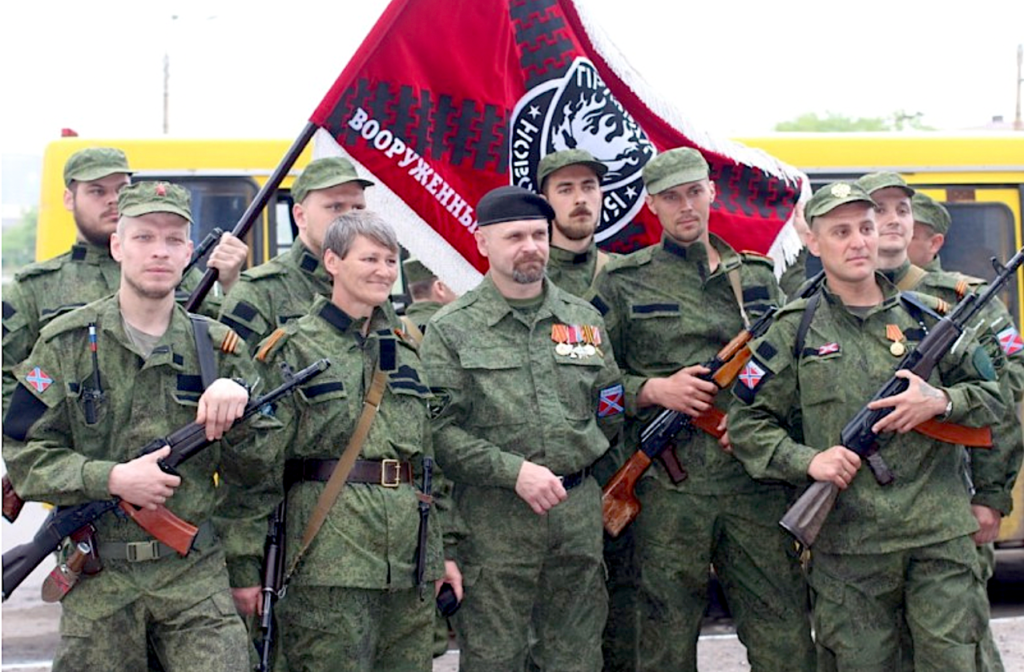
| Toxic rivalries
While Russian ground forces supported by various private military companies and mercenary groups are involved in the brutal fighting in eastern Ukraine, a different kind of conflict is simultaneously playing out in the high ranks of the military establishment in Moscow: Vladimir Putin is dismissing and replacing his senior commanders while competing factions vie for his approval.
The disputes between senior officers within the Russian army over strategy in Ukraine are creating tensions at the top and show that Russia’s war effort is not as unified and coherent as it might seem. They also raise questions about Putin’s role and authority in the conflict and whether he can achieve his goals without alienating or losing his security forces.
The military, like any organisation, is made up of people and is therefore fundamentally vulnerable. And where there are people, there is also an organisational culture Culture can affect a military’s performance as much as the capabilities of its weapons or the number of its personnel. All the tanks in the world do not mean much if the system that maintains them is weakened by corruption and false reporting But the component that explains why systems adopt inefficient structures, struggle with coordination or are filled with mutual distrust and self-sabotage is undoubtedly politics.

Where the political interests of the individual diverge from the interests of the collective, bad things
happen, and where leaders begin to place more emphasis on loyalty than competence, a system will never realise its full potential.
In war efforts, ideally all the forces and capabilities available to a state are pooled. But sometimes it is more in one’s own interest for another to fail than for a joint victory. The concept is similar in military affairs, but the consequences are deadlier.
The Wagner Group, for example, supported Russian interests in attacks on strategic locations such as Bakhmut and Soledar and suffered heavy losses. However, the group’s role has led to a bitter rift between the Russian Ministry of Defence and Prigozhin, who are competing for recognition and influence.

A few days after Prigozhin’s declaration of victory, which was promptly denied by a Ukrainian spokesman, the Russian Ministry of Defence announced that it had taken Soledar after air and artillery attacks and airborne operations. In fact, Wagner was not even mentioned at first, but after Prigozhin accused the military of “stealing Wagner’s victory”, it praised the group’s “courageous and selfless effort” in storming the city.
Prigozhin has strongly condemned the military leadership for mistakes in Ukraine, claiming Wagner was more effective than the regular forces. He has found a strong supporter in Chechen leader Ramzan Kadyrov, who has sent elite soldiers to Ukraine, who also criticises the military leadership and the Kremlin for being too weak and hesitant.
Although both warlords have sworn allegiance to Putin, their public criticism of the Kremlin’s most senior generals was unprecedented in Russia’s tightly controlled political system and challenged the Kremlin’s exclusive right to do so.

| Implications and consequences
Power struggles have affected the operational readiness of the Russian army as internal conflicts divert attention from training, readiness and strategic planning. The focus on internal power struggles has led to a decline in combat power and undermined the military’s ability to respond to threats.
Moreover, internal rivalries within the army seem to undermine loyalty to the chain of command and discipline. Factional loyalties and personal ambitions have eclipsed the larger mission, undermining trust and compromising military effectiveness.
Similarly, recent cases have also shown that effective decision-making processes within the military hierarchy are also hampered by tensions and rivalries within the ranks. Competing factions push for policies that suit their own interests, which can hamper the ability to formulate coherent and unified strategies.
Finally, ongoing internal conflicts have weakened the institutional fabric of the military. The erosion of trust, corruption and ideological divisions have hindered the development of professional and performance-oriented armed forces and undermined the long-term stability of the Russian military apparatus.

| The axe falls
Sixteen months have elapsed since President Putin’s invasion of Ukraine, and the Russian military is still struggling to make significant gains on the battlefield. Military advances around the towns of Soledar and Bakhmut have been marginal, and what Russian soldiers have captured has been destroyed in the process. So this is also an unusually futile war.
Obviously there are many Russians who realise how badly it went, that none of the Russian objectives were really achieved and that this has set the country back years. But there seems to be a kind of rallying effect and the atmosphere is not one of expressing treasonous thoughts; many Russians even seem to be in a state of denial.
But ending this war without having achieved its objectives is certainly not one of President Putin’s options, at least for the moment. If he did, he would have to settle accounts and weigh the costs of the war against what he has achieved.
This could have an impact on the overall strategy at the moment. And one explanation for the ferocity with which the Russian army went after Bakhmut is that Putin still seems to have the idea that if he can only take all of Donetsk and hold all of Luhansk, it might work.
This, however, required a radical change in military leadership. In an unusual shake-up in the midst of ongoing military operations, President Putin has dismissed senior commanders, transferred a number of others and replaced many of them with lower-ranking officers, in what many analysts see as a purge.


The generals in charge of Russia’s eastern and western military districts have lost their orders. Colonel General Aleksandr Chayko was dismissed as commander of the Eastern Military District in May 2022, and Colonel General Alexander Zhuravlyov, commander of Russia’s Western Military District, was dismissed on 3 October 2022. He was to be replaced by Lieutenant General Roman Berdnikov. The Western Military District is one of five military districts that make up the Russian armed forces. Zhuravlyov’s reported departure follows dramatic Russian losses in north-eastern Ukraine in April 2022 and Ukraine’s recapture of Lyman, which Russia had used as a key logistics centre in the Donetsk region.


A week earlier, the Defence Ministry had announced that the deputy minister in charge of logistics, General Dmitry Bulgakov, had been replaced. At the end of May 2022, it was reported that Colonel General Gennady Valeryevich Zhidko had assumed overall responsibility for the Russian armed forces during the Russian invasion of Ukraine in 2022, replacing Army General Alexander Dvornikov. However, on 8 October 2022, he was replaced by Army General Sergei Surovikin as the new Commander-in-Chief of the Russian Armed Forces in Ukraine.


General Sergei Vladimirovich Surovikin was initially commander of the Army Group South of the Russian Armed Forces. On 8 October 2022, he became commander of all Russian forces that invaded Ukraine, but was replaced by Valery Gerasimov in January 2023.
Colonel General Aleksander Pavlovich Lapin was commander of the Central Military District of the Russian Armed Forces at the beginning of the invasion of Ukraine.
After being criticised by senior military officials as well as Chechen leader Ramzan Kadyrov and Wagner commander Yevgeny Prigozhin for incompetence and abandoning the strategic city of Lyman, he was dismissed by Putin. However, in a reshuffle in January 2023, he was appointed Chief of Staff of the Russian Ground Forces.


British military intelligence reported on 13 May 2022 that the Kremlin had arrested Lieutenant General Sergei Kisel, the commander of the elite 1st Guards Tank Army.
Due to great losses in personnel, weapons and military equipment, the commander of the 6th Army, Lieutenant General Vladislav Ershov, as well as the commander of the 22nd Army Corps of the Southern Military District, Major General Arkady Marzoev were also dismissed.


In April 2022, the commander of Russia’s Black Sea Fleet, Vice Admiral Igor Osipov, was suspended for the sinking of the flagship cruiser ‘Moskva’ after an apparent Ukrainian missile attack.
In January 2023, the Kremlin appears to have dismissed Colonel General Mikhail Teplinsky, the current head of Russia’s elite airborne forces from a high-level operational role in the Ukraine campaign. He was appointed head of Russia’s elite airborne troops in June 2022, having suffered heavy losses in the early days of the war in Ukraine.

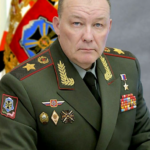
General Aleksander Vladimirovich Dvornikov who was given command of Russia’s Southern Military District after gaining notoriety for his brutal campaigns in Syria, was tasked with conquering the eastern Ukrainian region of Donbas in early April 2022 after a large-scale assault on Ukraine failed due to fierce Ukrainian resistance.
General Dvornikov, known as the “Butcher of Syria’, suddenly disappeared from public view in June 2022. His disappearance led to speculation that he was no longer in command of the campaign. His absence from public view was reminiscent of Russian Defence Minister Sergei Shoigu’s 13-day absence in March 2022 after the first failures in Ukraine.
Perhaps most remarkably, General Valeriy Gerasimov, the Chief of the Russian General Staff – a position roughly comparable to that of the US Chairman of the Joint Chiefs – and First Deputy Minister of Defence, remains in his post as Commander-in-Chief of Russian forces in Ukraine, having replaced General Surovikin. According to British intelligence, however, it is unclear whether he still enjoys President Putin’s confidence.
Tatiana Stanovaya, senior fellow at the Carnegie Russia Eurasia Center noted that Gerasimov’s appointment is another attempt by Putin to solve his military problems by turning over the top leadership. “He is trying to reshuffle the pieces and is therefore giving chances to those who he finds persuasive,” she wrote. “But in reality, the problem is not with the people, but with the tasks at hand.”

Before his appointment, General Gerasimov was in charge of the operation in Ukraine, as Viktor Alksnis, a former colonel in the Soviet Air Force and one of the leaders of the failed effort to save the USSR in 1991, pointed out. “This decision reflects the understanding by our political and military leadership that the special military operation has failed and none of its goals has been fulfilled in nearly a year of fighting,” Alksnis wrote on his messaging app channel. “Replacing Surovikin with Gerasimov will change nothing.”
And Mark Galeotti, a specialist in Russian military and security affairs at University College, London, said the appointment handed General Gerasimov “the most poisoned of chalices as he now will bear direct responsibility for any more setbacks. Gerasimov is hanging by a thread.” In a commentary on Twitter Galeotti added. “He needs some kind of win, or a career ends in ignominy. This may well suggest some kinds of escalation.” Galeotti also warned that frequent reshuffling of Russia’s generals could erode allegiance in the officer corps. “If you keep appointing, rotating, burning your (relative) stars, setting unrealistic expectations, arbitrarily demoting them, that’s not going to win loyalty,” he said.

| Future prospects
The conflict in Ukraine, which shocked the whole world when it erupted in February 2022, has in some ways become normalised. A historical analogy for this period could be the middle of 1915. The First World War began in 1914 and heavy fighting was still ahead in mid-1915, but all the major parties were confident that they would win and survive many more months or years of hostilities.
It is likely that Russia will eventually be defeated and Ukraine will recapture most or all of the occupied territories, but a collapse of Putin’s regime is unlikely even if the war aims are not fully achieved. Surprisingly, the Kremlin seems to be benefiting from the West’s support for Ukraine, as it can continue to tell its population that NATO is at war with Russia.
Many military and academic experts believe that the war will last until the end of 2023 because the Russian president wants to keep the conflict going until his expected re-election in March 2024.
In this way, he can argue that Russia is threatened from outside and that he is the only one who can defend it. It is possible that the coming months will see a shift towards a more united and consolidated Russian power elite, with a significant reduction in the role of all non-conventional forms of warfare, such as private armies, convicted criminals, mercenaries and ethnic battalions, and an increase in Russian protection of occupied territories.
We are now in a war of attrition and major changes are unlikely to occur until after mid-2024. Only when the direction the Russian regime is taking becomes clearer and both Ukraine and the West seem to be tired of the ongoing conflict, may some concrete options for ending the conflict emerge.

